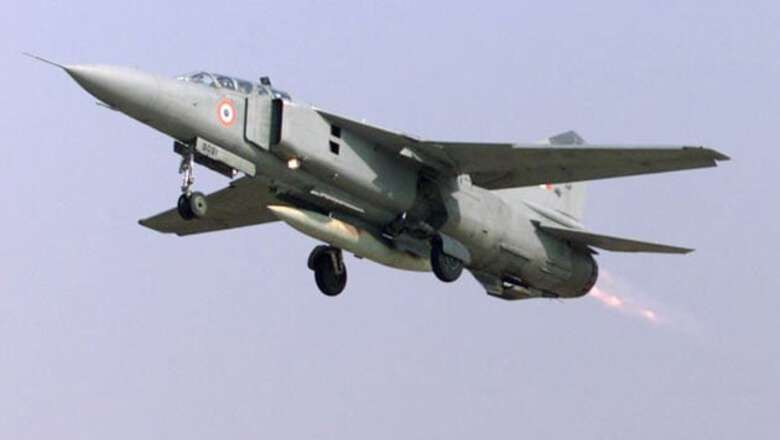
views
New Delhi: Considering the threat perception from both China and Pakistan, the Indian Air force (IAF) has upgraded its capabilities to meet any challenge from the two fronts simultaneously. These capabilities were tested successfully for the first time during the recent three-week war games 'Livewire' in which over 400 fighter jets participated, IAF sources said on Monday.
In the exercise, which commenced on March 18, the IAF created a simulated scenario of a challenge from both eastern and western fronts simultaneously. Testing its capabilities to meet the challenge, the IAF swiftly mobilised its frontline fighter and transport aircraft from Pakistan border to the eastern front, particularly the recently-developed Advanced Landing Grounds (ALGs) in the Northeast, the sources said.
All the major aircraft of the IAF including the Su-30MKI, Mirage 2000, Jaguars, MiG 29, MiG 27s and the MiG 21s took part in the war games. They said the force kept the required number of aircraft in the western front while mobilising the majority of its assets including the mid-air refuelling aircraft towards the eastern front, they said.
All the air-fields in the northeast including the eight Advanced Landing Grounds at Along, Walong, Tuting, Ziro, Pasighat, Vijay Nagar and Tawang were activated and were manned for operations of all types of fighter and transport aircraft operations.
This was the first time that such an exercise was conducted by the IAF where it tested its capabilities on both the possible war fronts, sources said.
During the exercise, the biggest aerial mobilisation of assets in the IAF was carried out with more than 2,000 tonnes of load being shifted in around 100 sorties, the sources said. The IAF also practised special operations involving its recently-inducted C-130J Super Hercules aircraft from the US, which were used to paradrop Army Special Forces, national Security Guard commandos and its Garud security guards.
Heliborne operations were also carried out using the new Mi-17V5 choppers from Russia which allowed the force to practise internal security operations. The IAF planes flew around 8,000 hours in the three weeks to validate its war-fighting concepts.
Barring two incidents of a mix-up with the commercial airliners, the whole exercise was hassle free, they said. The IAF is in the process of increasing its operational strength from 34 squadrons to 42 squadrons and once that level is reached, the need for such an asset shift would not be required to a large extent, the sources said.
The IAF, which has a traditional edge over Pakistan, has been increasing its presence and strength in the Northeastern areas by deploying squadrons of its frontline aircraft Su-30MKI at Tezpur, Chabua and other bases there.
It has also upgraded the infrastructure for operations of its fighter and transport aircraft at the ALGs and air bases in the region along the China border after the Chinese side created a big infrastructure for its military on its side of the boundary.
The IAF said in 2012-13 it has registered its lowest accident rate in the last 30 years with only five major accidents among which three were caused by technical defects while two were due to human error. The IAF said it has implemented various new techniques and studies to bring about the improvement in its flight safety record, which includes induction of large number of simulators for training the pilots.
In 2011-12, the IAF had recorded 13 crashes while in 2010-11, the figure was 12. Commenting on the M-MRCA project, the IAF sources said the negotiations were going on between the Defence Ministry and the French Dassault Aviation and the deal was expected to be inked by the end of this year.
On the new Pilatus Basic Trainer Aircraft, the IAF said it has proposed the procurement of 37 more such aircraft for training its rookie pilots.


















Comments
0 comment